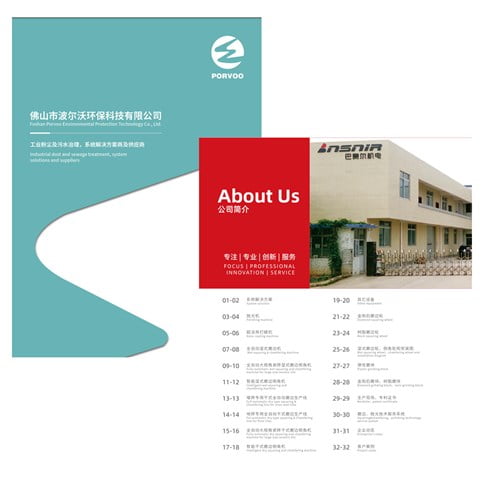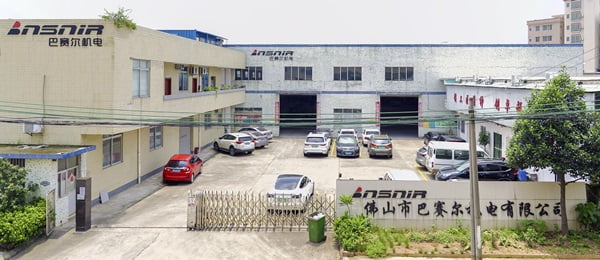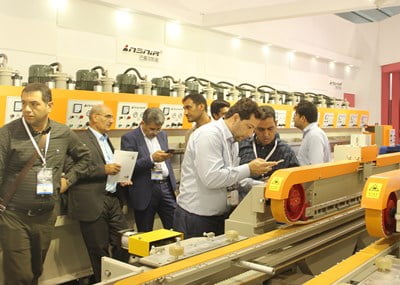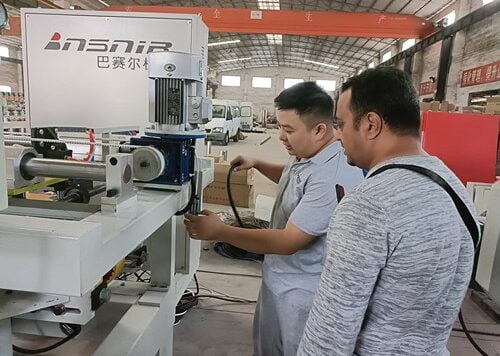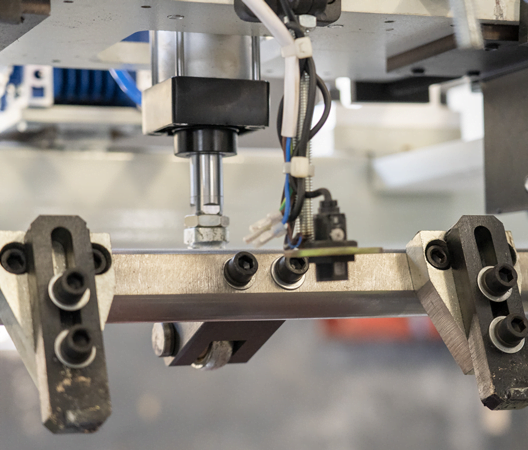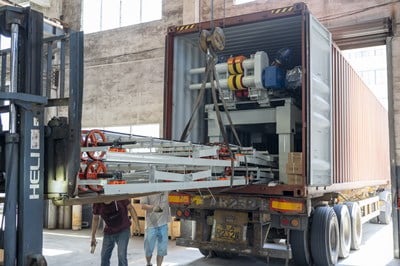Operating a ceramic tile line polishing machine efficiently requires more than just pressing the start button. Many manufacturing facilities struggle with inconsistent surface quality, excessive downtime, and operator safety concerns that can cost thousands of dollars in lost productivity daily. Without proper operational knowledge, even the most advanced polishing equipment can become a bottleneck in your production line.
These operational challenges don’t just impact your immediate output—they cascade through your entire manufacturing process, affecting delivery schedules, customer satisfaction, and ultimately your bottom line. Poor machine operation practices can lead to equipment damage, worker injuries, and substandard products that require costly rework or complete rejection.
This comprehensive guide provides you with a systematic, step-by-step approach to mastering ceramic tile line polishing machine operation. You’ll discover proven techniques used by industry professionals, essential safety protocols, and advanced optimization strategies that can increase your production efficiency by up to 30% while ensuring consistent, high-quality results.
What Is a Ceramic Tile Line Polishing Machine?
A ceramic tile line polishing machine represents sophisticated manufacturing equipment designed specifically for achieving mirror-like finishes on ceramic and porcelain tiles. These industrial systems integrate multiple polishing heads, diamond abrasives, and precision control mechanisms to deliver consistent surface quality across high-volume production runs.
BASAIR Tech has documented that modern polishing machines can process between 200-500 square meters of tiles per hour, depending on the specific model and tile specifications. The equipment typically features 8-20 polishing heads equipped with resin-bonded diamond pads, operating at speeds ranging from 300-800 RPM.
Key Components and Functionality
The machine’s core architecture includes a conveyor system that transports tiles through sequential polishing stations. Each station performs specific functions: coarse grinding removes surface irregularities, intermediate polishing eliminates scratches, and final buffing creates the desired gloss level. Water circulation systems maintain optimal temperatures while removing debris and preventing pad clogging.
Industry research from ceramic manufacturing associations indicates that polishing machines with automatic pressure adjustment systems achieve 40% better surface consistency compared to manual pressure settings. These advanced features ensure uniform contact pressure across varying tile thicknesses and surface irregularities.
| Component | Function | Typical Specifications |
|---|---|---|
| Diamond Polishing Heads | Surface finishing | 8-20 heads, 300-800 RPM |
| Conveyor System | Tile transport | 1-15 m/min variable speed |
| Water Circulation | Cooling and cleaning | 200-500 L/min flow rate |
| Pressure Control | Contact optimization | 0.1-2.0 MPa adjustable |
What Equipment Do You Need for Safe Machine Operation?
Successful equipment handling begins with assembling the complete set of operational tools and safety equipment. Beyond the polishing machine itself, operators require specific diamond pad sets, calibrated measuring instruments, and comprehensive personal protective equipment to ensure both safety and quality outcomes.
Essential diamond polishing pads range from 50-grit for heavy stock removal to 3000-grit for final polishing. Professional operators typically maintain complete pad sets including 50, 100, 200, 400, 800, 1500, and 3000-grit options. Each grit serves specific purposes: coarse grits remove material quickly but leave visible scratches, while fine grits eliminate scratches but remove minimal material.
Safety Equipment Requirements
Personal protective equipment represents non-negotiable operational requirements. Safety glasses with side shields protect against flying debris and chemical splashes. Hearing protection becomes mandatory when operating multiple polishing heads simultaneously, as sound levels often exceed 85 decibels. Non-slip safety footwear with puncture-resistant soles prevents accidents around wet working areas.
According to occupational safety data from ceramic manufacturing facilities, proper PPE usage reduces workplace injuries by 67%. Respiratory protection becomes particularly important when dry polishing or working with dusty materials, requiring N95 or equivalent filtration capabilities.
How to Prepare Your Workspace Before Starting?
Workspace preparation directly impacts both operational safety and finished product quality. The preparation process involves systematic inspection of utilities, material staging, and environmental controls that create optimal conditions for precise polishing operations.
Begin by verifying adequate electrical supply capacity. Most industrial polishing machines require 380V three-phase power with current ratings between 50-150 amperes, depending on the number of polishing heads. Insufficient power capacity leads to motor strain, inconsistent speeds, and premature equipment failure.
Water System Setup
Water quality significantly affects polishing results and equipment longevity. Optimal water should maintain pH levels between 6.8-7.2 and contain minimal dissolved minerals that could deposit on tile surfaces or clog circulation systems. Many facilities install water treatment systems specifically for polishing operations, reducing maintenance requirements by up to 50%.
Temperature control maintains consistent polishing conditions. Ambient temperatures between 18-25°C (64-77°F) provide optimal working conditions for both operators and equipment. Lower temperatures can cause lubricant thickening and reduced polishing efficiency, while higher temperatures accelerate pad wear and increase operator fatigue.
What Are the 7 Essential Steps to Operate the Machine?
Mastering systematic operating procedures ensures consistent results while minimizing equipment wear and safety risks. These seven steps represent industry-proven methodology developed through decades of ceramic manufacturing experience and continuous process improvement.
Step 1-2: Initial Setup and Safety Checks
Step 1: Power System Verification
Conduct comprehensive electrical system inspection before energizing equipment. Verify proper grounding connections, inspect power cables for damage, and confirm emergency stop systems function correctly. Professional practice includes testing all safety interlocks and ensuring backup power systems remain operational.
Step 2: Mechanical Component Inspection
Systematically inspect all mechanical components for proper alignment and lubrication. Check conveyor belt tension, verify polishing head alignment, and ensure adequate lubricant levels in all bearing assemblies. Industry data shows that 73% of unplanned downtime results from insufficient pre-operational inspections.
Step 3-4: Material Loading and Parameter Setting
Step 3: Tile Staging and Quality Assessment
Properly stage incoming tiles according to size, thickness, and surface condition. Group similar materials to minimize parameter adjustments during production runs. Inspect each tile batch for defects that could damage polishing pads or compromise surface quality.
Step 4: Parameter Optimization
Configure operational parameters based on tile specifications and desired finish quality. Set conveyor speeds between 2-8 meters per minute for standard ceramic tiles, adjusting based on material hardness and required gloss levels. Water flow rates typically range from 3-8 liters per minute per polishing head.
| Parameter | Standard Range | Premium Quality Range |
|---|---|---|
| Conveyor Speed | 4-8 m/min | 2-4 m/min |
| Head Pressure | 0.5-1.0 MPa | 0.3-0.7 MPa |
| Water Flow | 5-8 L/min/head | 3-5 L/min/head |
Step 5-7: Operation and Quality Control
Step 5: Sequential Start-up Procedure
Follow systematic start-up sequence beginning with water circulation systems, followed by conveyor activation, and finally polishing head engagement. This sequence prevents dry running and ensures proper lubrication before applying mechanical loads.
Step 6: Continuous Monitoring Protocol
Maintain vigilant observation of surface quality, equipment sounds, and operational parameters throughout production runs. Professional operators check gloss readings every 30 minutes using calibrated gloss meters, maintaining readings within ±3 of target specifications.
Step 7: Quality Documentation and Adjustment
Document quality measurements and operational parameters for traceability and continuous improvement. When quality deviates from specifications, implement systematic adjustment procedures rather than random parameter changes. Experience shows that methodical adjustments achieve target quality 85% faster than trial-and-error approaches.
How to Maintain Optimal Performance During Operation?
Sustained peak performance requires proactive monitoring and systematic maintenance of critical operational parameters. Research from leading ceramic manufacturers indicates that facilities implementing structured performance monitoring achieve 23% higher overall equipment effectiveness compared to reactive maintenance approaches.
Real-time parameter monitoring focuses on three critical areas: mechanical performance, surface quality consistency, and consumable wear patterns. Professional operators track polishing head vibration levels, maintaining readings below 5mm/s RMS to prevent surface finish irregularities and premature component wear.
Advanced Monitoring Techniques
Temperature monitoring provides early warning of developing problems. Bearing temperatures should remain within 15°C of ambient temperature, while motor temperatures typically operate 40-60°C above ambient. Significant temperature increases often indicate lubrication problems or mechanical binding requiring immediate attention.
Water quality monitoring prevents gradual equipment degradation and surface quality issues. Conductivity readings above 500 µS/cm indicate excessive mineral content that can cause deposits. pH levels outside the 6.8-7.2 range affect polishing pad performance and can cause corrosion in circulation systems.
What Common Issues Should You Watch For?
Understanding potential operational challenges enables proactive intervention before minor issues become major problems. Industry experience identifies specific warning signs that consistently precede equipment failures or quality defects in ceramic tile polishing operations.
Uneven surface finishes typically result from inconsistent contact pressure or worn polishing pads. When gloss readings vary more than ±5 units across tile surfaces, investigate head alignment and pad condition immediately. Delayed response to surface quality issues often requires complete tile reprocessing, significantly impacting production efficiency.
Troubleshooting Critical Problems
Excessive pad wear indicates either incorrect operational parameters or contaminated materials. Normal pad life ranges from 800-1200 square meters for resin-bonded diamond pads, depending on tile hardness and operational conditions. Premature pad failure often traces to inadequate water flow, excessive pressure, or abrasive contaminants in tile surfaces.
Vibration issues manifest through surface scratching, equipment noise, or visible head movement during operation. According to maintenance data from ceramic facilities, 68% of vibration problems stem from pad contamination or improper installation. Systematic pad inspection and replacement protocols prevent most vibration-related quality issues.
| Problem Indicator | Typical Cause | Immediate Action |
|---|---|---|
| Uneven gloss | Pressure variation | Check head alignment |
| Excessive noise | Pad wear/contamination | Inspect and replace pads |
| Water discoloration | Pad degradation | Replace affected pads |
| Surface scratching | Contaminated pads | Stop operation, clean system |
How to Ensure Long-Term Equipment Reliability?
Long-term reliability depends on systematic preventive maintenance combined with operational discipline that prevents avoidable equipment stress. Manufacturing facilities implementing comprehensive reliability programs report 40% fewer unplanned shutdowns and 25% lower total maintenance costs compared to reactive maintenance approaches.
Daily maintenance routines focus on lubrication, cleaning, and visual inspection of critical components. Lubrication schedules vary by component: conveyor bearings require weekly attention, while polishing head bearings need daily monitoring. Over-lubrication causes contamination problems, while under-lubrication leads to premature failure.
Preventive Maintenance Strategies
Weekly deep cleaning removes accumulated debris and prevents corrosion in water circulation systems. Use appropriate cleaning solutions designed for ceramic manufacturing environments, avoiding harsh chemicals that could damage seals or cause environmental concerns. Professional cleaning protocols typically require 2-3 hours weekly but prevent major system failures.
Monthly precision alignment checks ensure consistent surface quality and prevent premature component wear. Laser alignment tools provide accuracy within 0.1mm, maintaining optimal contact patterns across all polishing heads. Facilities performing monthly alignments achieve 30% longer pad life and 15% better surface quality consistency.
Professional ceramic tile line polishing machine operations require systematic approach combining technical knowledge with practical experience. Success depends on understanding equipment capabilities, following proven procedures, and maintaining unwavering attention to safety and quality standards.
The seven-step operational framework presented here provides the foundation for achieving professional results while maximizing equipment reliability and operator safety. Remember that mastery develops through consistent practice and continuous learning from each production run. As ceramic manufacturing technology continues advancing, operators who master these fundamental principles position themselves for success with new innovations and improved polishing equipment.
What specific challenges have you encountered in your ceramic tile polishing operations, and how might these systematic approaches address your particular production requirements?
Frequently Asked Questions
Q: What are the basic steps to operate a ceramic tile line polishing machine?
A: Operating a ceramic tile line polishing machine involves several key steps. Start by preparing the area, ensuring it’s free of debris. Next, attach the correct polishing pad to the machine. Apply a recommended polishing solution and begin buffing in a controlled motion, usually in sections. After polishing, dry the tiles thoroughly and inspect for any missed spots.
Q: How do I ensure safety while using a ceramic tile line polishing machine?
A: Safety is paramount when using a ceramic tile line polishing machine. Always wear protective gear like gloves and safety glasses. Ensure the machine is properly balanced and adjusted to a comfortable height. Keep the working area well-ventilated and avoid overexertion. Regularly inspect the machine for wear and tear to prevent accidents.
Q: What types of polishing pads are best for ceramic tile?
A: For ceramic tile polishing, use pads specifically designed for this task. Common types include red pads for heavy-duty cleaning, white pads for fine polishing, and blue pads for high-gloss finishes. The choice of pad depends on the desired level of shine and the current condition of the tiles.
Q: How do I achieve a high-gloss finish on ceramic tiles using a polishing machine?
A: To achieve a high-gloss finish, start with a clean tile surface. Apply a suitable polishing compound and use a high-speed buffer with a blue or white pad. Buff in circular motions, applying light to moderate pressure. Repeat the process until the desired shine is achieved. Finish by cleaning the tiles to remove any residue.
Q: What are common mistakes to avoid when operating a ceramic tile line polishing machine?
A: Common mistakes to avoid include using the wrong polishing pad for the job, not cleaning the tiles thoroughly before polishing, and applying too much pressure, which can lead to scratches. Also, ensure the machine is properly balanced to prevent uneven polishing or damage to the machine itself.
Q: How often should I maintain my ceramic tile line polishing machine?
A: Regular maintenance is crucial for extending the life of your polishing machine. After each use, clean the machine and pads thoroughly. Check for wear on pads and replace them as needed. Also, ensure all moving parts are well-lubricated to prevent overheating and damage. Regularly inspect cables and handles for damage.
External Resources
- How To Operate And Use A Floor Polisher/Buffer – YouTube – This video demonstrates how to operate a floor polishing machine, including step-by-step instructions on pad installation, handle adjustment, and polishing technique.
- How to Buff and Polish Tile Floors – Crewcare Commercial Cleaning – Offers a guide on buffing and polishing tile floors, outlining steps such as applying buffing solution, machine operation, and drying procedures.
- How To Operate And Use A Floor Buffer / Polishing Machine – Cleaning Equipment Services – Provides step-by-step instructions for operating and polishing with a floor buffer, designed for safe and effective use.
- How to Buff and Polish Tile Floors – Jims Cleaning NZ – Details a comprehensive, step-by-step approach to buffing and polishing tile floors using a machine, including preparation and finishing tips.
- How to Polish Floor Tiles – Ultimate Guide | OzClean Brisbane – Gives a detailed procedure for polishing ceramic and porcelain tiles with a machine, covering cleaning, pad selection, and inspection steps.
- How To Polish Floor Tiles: A Step By Step Guide – Fantastic Cleaners – Explains a structured method for machine polishing floor tiles, emphasizing cleaning, pad use, and maintaining a uniform shine.

